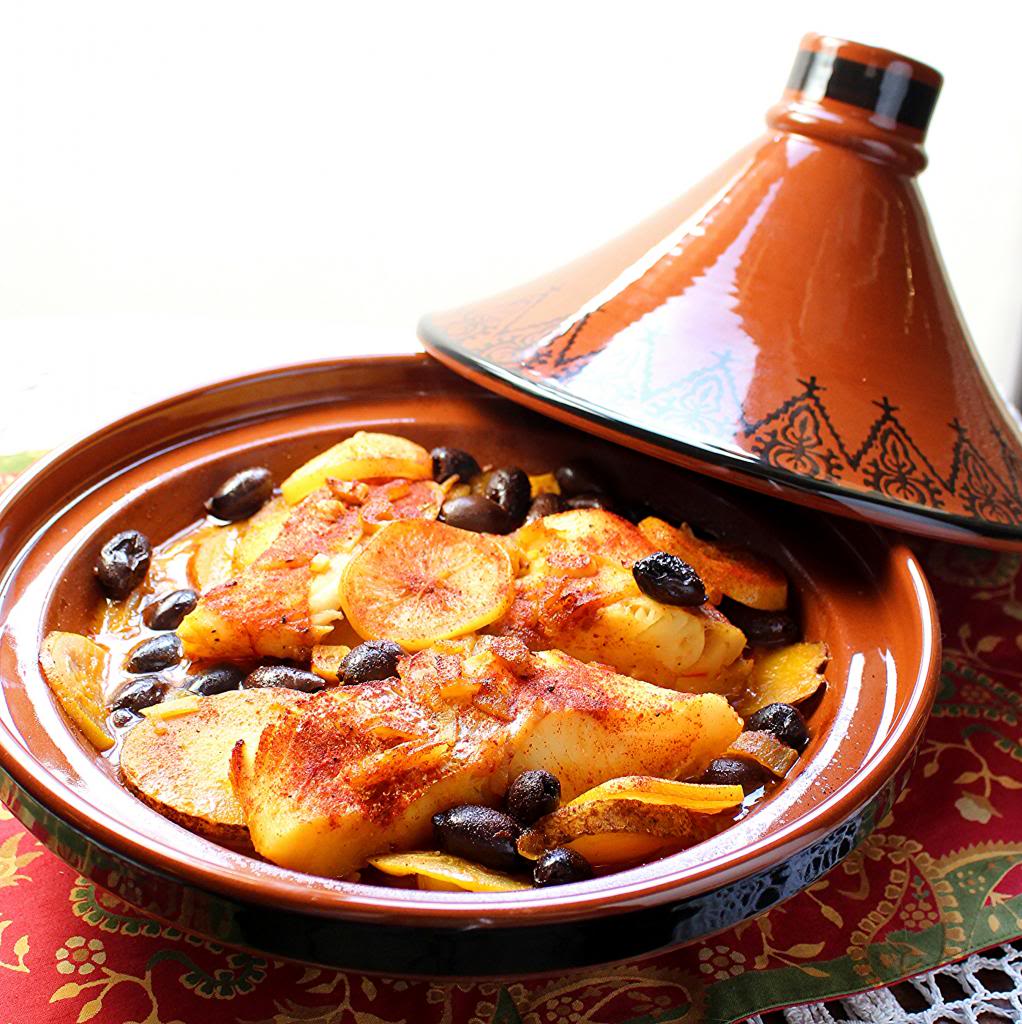Discover the Flavors of Morocco: The Art of Cooking with a Moroccan Tajine

Morocco is a land rich in culture, history, and culinary delights. One of its most iconic symbols of traditional cooking is the Moroccan Tajine. This unique earthenware pot has been used for centuries to prepare slow-cooked, flavorful dishes that are the heart and soul of Moroccan cuisine. But what exactly is a Tajine, and why is it so special? Let’s dive into the world of this ancient cooking vessel and discover why the Moroccan Tajine is a must-have in any kitchen.
What is a Moroccan Tajine?
The Tajine is both the name of the dish and the pot in which it is cooked. The pot is made of clay or ceramic, with a distinct conical lid that allows steam to circulate as the food cooks, trapping flavors and moisture. This unique design ensures that every dish prepared in a Tajine is tender, aromatic, and full of rich, complex flavors.
The Tajine pot is deeply rooted in Moroccan culture, with each region having its own variations of recipes passed down through generations. The slow-cooking process allows the ingredients to meld together, creating a harmonious blend of spices, meats, and vegetables.
The Art of Tajine Cooking
Cooking with a Tajine is an experience that goes beyond just preparing a meal. It’s about embracing a tradition that has been perfected over centuries. Here’s how you can create a traditional Moroccan Tajine at home:
1. Choosing the Right Tajine
When selecting a Tajine pot, it’s essential to choose one made from high-quality clay or ceramic. Some Tajines are glazed, while others are unglazed. The unglazed ones are often preferred for their ability to enhance the flavor of the dish, as the porous clay absorbs some of the spices and ingredients.
- Tip: Before using a new Tajine, soak it in water for a few hours to prevent cracking and ensure it lasts longer.
2. The Ingredients
A traditional Moroccan Tajine typically includes a combination of meat (such as lamb, chicken, or beef), vegetables, dried fruits (like apricots or prunes), nuts, and a blend of aromatic spices. Common spices include cumin, coriander, cinnamon, saffron, ginger, and turmeric. Each ingredient plays a vital role in creating the distinctive flavor profile of the dish.
- Popular Varieties:
- Chicken with Preserved Lemons and Olives
- Lamb with Prunes and Almonds
- Vegetable Tajine with Chickpeas
3. The Cooking Process
Cooking with a Tajine requires patience. The dish is cooked slowly over low heat, allowing the flavors to develop and the meat to become tender. The conical lid helps to trap steam, which then condenses and drips back down into the food, keeping it moist and flavorful.
- Steps:
- Start by heating the base of the Tajine over low heat.
- Add olive oil, onions, and garlic, sautéing until soft.
- Layer your meat and vegetables, sprinkling spices as you go.
- Add a small amount of water or broth, cover with the lid, and let it cook slowly for several hours.
4. Serving the Tajine
Traditionally, a Tajine is served directly from the pot it was cooked in, making it a beautiful centerpiece for any dining table. It’s often accompanied by couscous or freshly baked bread to soak up the delicious sauce.
Why Every Kitchen Needs a Moroccan Tajine
The Moroccan Tajine is more than just a cooking pot; it’s a gateway to experiencing the rich culinary traditions of Morocco. Here’s why adding a Tajine to your kitchen is a decision you won’t regret:
- Versatility: From meat to vegetables, the Tajine can cook a wide range of dishes, each infused with the distinctive flavors of Moroccan spices.
- Health Benefits: Tajine cooking is often low in fat, as the slow-cooking process brings out the natural flavors of the ingredients without the need for excessive oils or fats.
- Cultural Connection: Using a Tajine allows you to connect with Moroccan culture and bring a piece of it into your home.
- Aesthetic Appeal: Beyond its functionality, a Tajine pot is a beautiful addition to any kitchen, with its earthy tones and traditional design.
Where to Buy Authentic Moroccan Tajines
If you’re inspired to try your hand at Tajine cooking, it’s essential to start with an authentic Tajine pot. Explore our selection of Moroccan Tajines crafted by skilled artisans in Morocco, available in various sizes and designs to suit your cooking needs.
Conclusion: Embrace the Moroccan Tajine Experience
The Moroccan Tajine is more than just a cooking vessel; it’s a celebration of flavor, tradition, and culture. Whether you’re a seasoned chef or a home cook looking to explore new culinary horizons, the Tajine offers endless possibilities for creating delicious, aromatic dishes that will transport your taste buds to the heart of Morocco. So why not add a Tajine to your kitchen and start your journey into the rich and vibrant world of Moroccan cuisine?